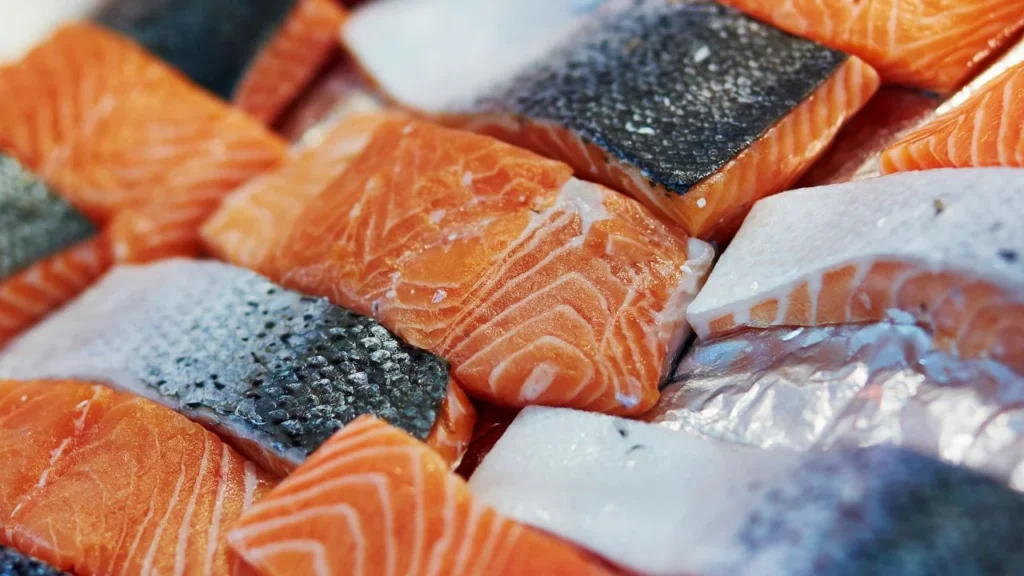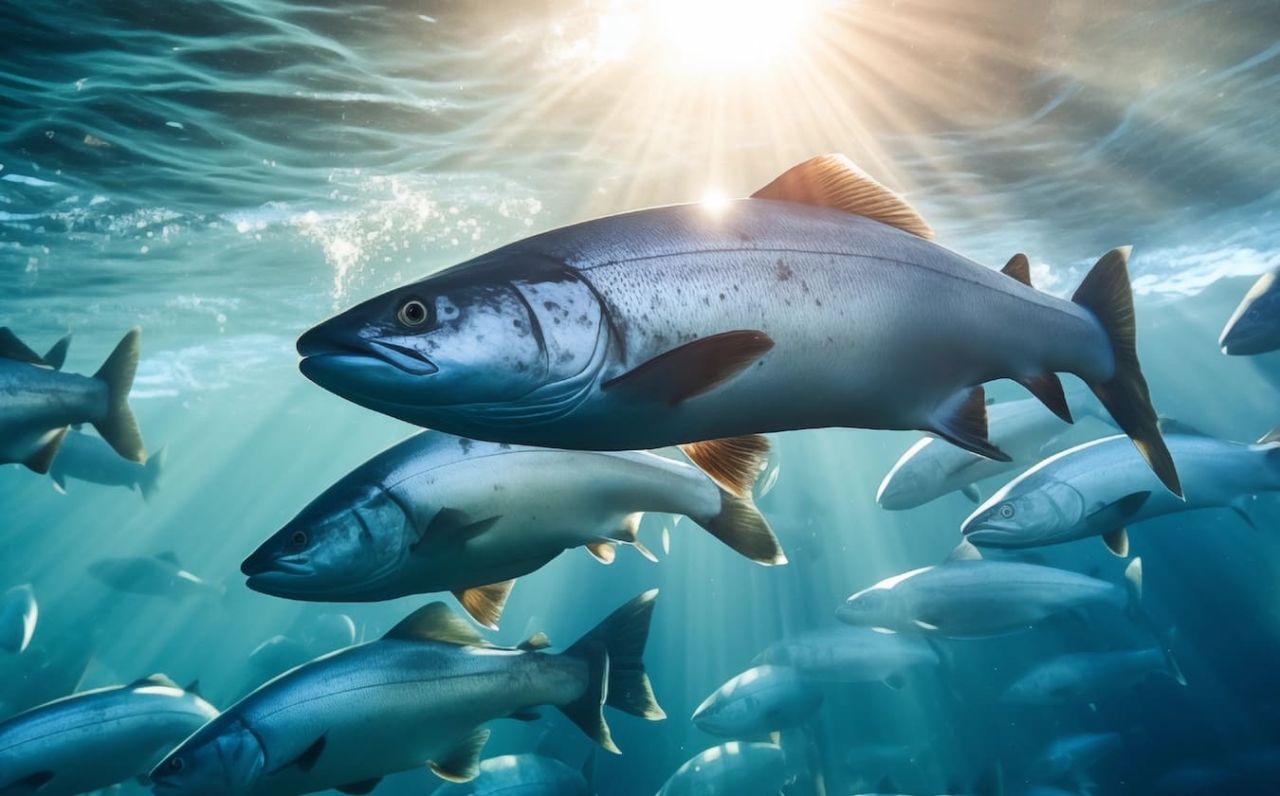Food & Climate
With its exceptional nutritional value and relatively low environmental footprint, farmed salmon seems suited to meet the challenges of feeding a growing world. Therefore , there were great efforts from various parties to develop the breeding of these fish, including Global Salmon Initiative (GSI).
It is committed to making farmed salmon a cornerstone of sustainable food systems. By aligning the sector with the United Nations Sustainable Development Goals (SDGs) and climate targets for 2030, GSI is helping shape a future where aquaculture can support both people and the planet, according a report seen by “Food & Climate” platform.
Global Salmon Initiative (GSI) is a collaborative leadership effort established by global farmed salmon CEOs who are committed to driving continuous improvements in the global salmon farming sector that support healthier, more sustainable food systems now, and for the future.
Farmed salmon aquaculture
What is sometimes unknown about aquaculture, specifically farmed salmon, is its low environmental footprint. With lower land and freshwater use and fewer emissions compared with most terrestrial proteins, farmed salmon stands out as one of the most eco-efficient animal-based proteins available.
Additionally, farmed salmon is an accessible and versatile option that fits into a variety of diets. It’s nutrient-dense, rich in omega-3 fatty acids, essential vitamins such as D and B12, and is an excellent source of high-quality protein.
This combination of delivering key nutrients with a low environmental footprint is what positions farmed salmon to play an important role in nourishing communities while supporting sustainable food systems.
However, like all other food-producing sectors, the sector must undergo significant transformation to meet the dual demands of feeding a growing population and reducing environmental impacts.
Within GSI, we believe collaboration is essential for driving meaningful change across the farmed salmon sector at the speed and scale needed to address climate change. GSI members work together to tackle shared environmental challenges, accelerating progress toward global sustainability goals.
One area of focus is improving the sustainability of aquaculture feed. Feed ingredients are a core part of fish farming in providing essential nutrients for the fish and for the end-consumer. However, these ingredients often come from complex supply chains with environmental and social risks, including greenhouse gas emissions, land conversion and use of natural resources such as wild fisheries.

To address these risks, GSI partnered with the World Wildlife Fund (WWF) to develop an Environmental, Social and Governance (ESG) Feed Risk Assessment Tool. This tool enables members to achieve full traceability of all aspects of the supply chain, building greater awareness of potential risks and areas of improvement and ultimately, guiding better decision-making to reduce impacts across supply chains.
Using a bubble curtain
Tools such as these demonstrate how shared innovation and transparency can strengthen a sector’s sustainability profile. Moreover, this tool is not limited to farmed salmon; it can be applied across the livestock and protein sectors to drive long-term, wide-scale improvements, according to ” trellis”.
WWF Markets Institute Senior Vice President Jason Clay said, “GSI has made more progress against individual company environmental goals and sector improvements than any other sector. Both the industry and its reputation have benefited from this collaborative work.”
This collective approach to identifying challenges and working together on solutions is what GSI is most focused on. Aside from sustainable feed, GSI members are also working to reduce carbon footprint. Farmed salmon already has a lower carbon footprint than many other proteins, but there is still room for improvement.
Another effort are done by the Marine Challenge Programme improved salmon health in Irish sea pens by using a bubble curtain to reduce plankton influx and mitigate related health issues.
This project, which started in 2021, aimed to enhance the survivability of salmon in sea pens along Ireland’s west coast by addressing health issues linked to increasing planktonic biomass in Irish waters.

Over the past 4-5 years, rising plankton levels have caused fish health problems and, in severe cases, mortality. A collaboration between salmon producers, the Irish Seafood Development Agency (BIM) and plankton identification experts, the project explored the use of a ‘bubble curtain’ or ‘bubble screens’ in salmon farms. This innovative solution creates a virtual barrier around the fish pens, reducing the influx of planktonic species and thereby improving environmental conditions for the fish, according to “European Commission”.

